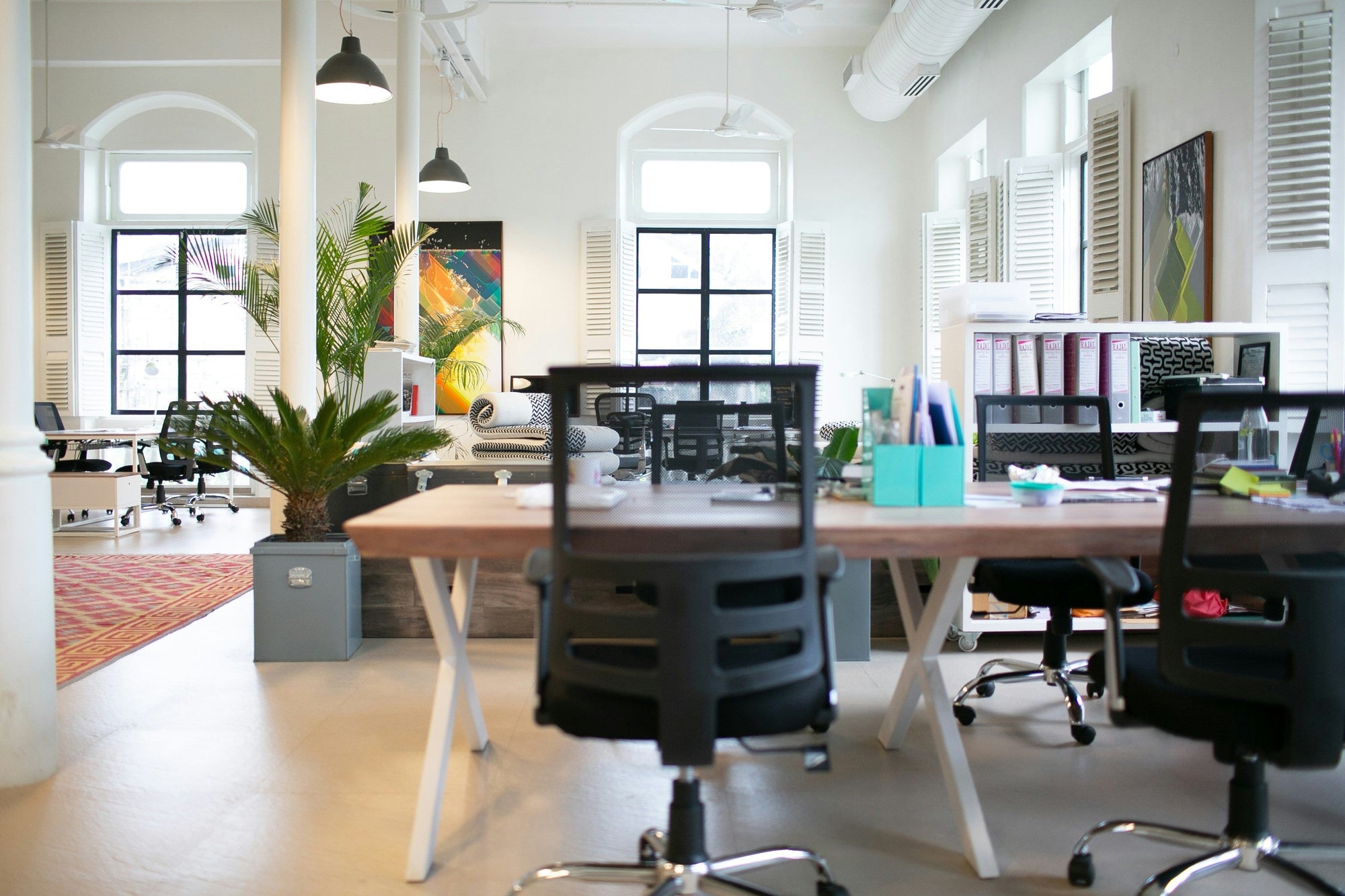How to Accurately Determine the Value of Office Furniture: A Comprehensive Guide
Determining the value of office furniture is essential for various business functions, such as accounting, asset management, resale, or donation considerations. Whether you are selling used furniture, reporting assets for tax purposes, or deciding on a furniture upgrade, understanding how to value these items accurately can have significant financial implications. This comprehensive guide will help you evaluate your office furniture’s worth by assessing condition, age, market trends, depreciation, and more. Here’s how to do it step by step:
Step 1: Assess the Condition and Age of the Furniture
The first and perhaps most critical step in determining the value of office furniture is to thoroughly assess the condition of each piece. Furniture in excellent condition will hold more value compared to items with visible wear and tear, damages, or outdated designs.
Evaluate Condition:
Begin by examining the physical condition of the furniture. Look for:
- Visible damage: Scratches, dents, stains, or chipped finishes.
- Functionality: Check if drawers, hinges, and mechanical parts work properly. For example, ergonomic chairs should still provide proper support and adjustability.
- Wear and tear: High-traffic furniture like chairs and desks may show signs of use such as faded upholstery or worn surfaces.
Grading the condition can help you categorize furniture into distinct value brackets:
- Like new: Items that show no or minimal signs of use.
- Good condition: Furniture that has some wear but functions properly and looks aesthetically pleasing.
- Fair condition: Items with significant wear or minor functional issues.
- Poor condition: Furniture that is damaged or no longer fully functional.
Consider the Age of the Furniture:
Next, determine the age of the furniture. Older items typically have lower value due to depreciation and technological advancements in design and ergonomics. For example, office furniture purchased over ten years ago may no longer meet modern standards of comfort or utility.
Key factors to evaluate include:
- Manufacturing date: Knowing the furniture’s age helps you apply depreciation models.
- Style and design: Outdated designs may have less appeal in today’s market, impacting resale value.
- Technological obsolescence: Furniture that lacks modern ergonomic features or technological accommodations (such as desks designed for sit-stand use) may have depreciated faster.
By assessing the condition and age, you can establish a base value that reflects the physical and functional state of each furniture piece.
Step 2: Research Current Market Prices
To gain a clearer understanding of your office furniture’s potential resale value or replacement cost, it’s crucial to research the current market for similar items. This step is key to determining how much your furniture is worth in today’s marketplace.
Explore Online Marketplaces:
Start by checking popular online platforms where used office furniture is frequently bought and sold. These include:
- eBay: A widely used platform where you can find comparable listings for used office furniture.
- Craigslist: A local classifieds site where businesses and individuals sell office furniture.
- Facebook Marketplace: A user-friendly option for browsing local listings of office furniture in your area.
- Letgo and OfferUp: Mobile apps that specialize in second-hand goods, including office furniture.
Look for listings of furniture that closely match yours in terms of brand, condition, and age. Make note of the asking prices to get a sense of the range at which similar items are being sold.
Compare Prices on Retail Websites:
If your office furniture is still being manufactured or sold new, compare its current retail price. Some useful websites for this research include:
- Office Depot: A large supplier of new office furniture, where you can find pricing for new items.
- Staples: Another major retailer that sells office desks, chairs, filing cabinets, and other furniture.
- Wayfair or Overstock: Online retailers with a wide selection of office furniture at varying price points.
Use Auction Websites for Price Trends:
Websites like Bidsquare or LiveAuctioneers often feature furniture auctions. While they focus more on antique and high-end items, auctions can be a good indicator of what certain types of office furniture, especially high-quality or designer pieces, are worth.
By gathering market data, you can estimate your furniture’s resale or replacement value. This will provide a realistic starting point for further valuation steps.
Step 3: Consider Depreciation
Depreciation is an essential factor when determining the current value of office furniture. Depreciation accounts for the natural wear and tear over time, lowering the furniture’s value from its original purchase price. There are several methods you can use to calculate depreciation, each of which impacts how much the furniture is valued at today.
Common Depreciation Methods:
-
Straight-Line Depreciation: This method spreads the furniture’s cost evenly over its useful life. For example, if you purchased an office chair for $500 with an estimated useful life of 10 years, you would depreciate $50 per year. If the chair is five years old, its current depreciated value would be $250.
Formula: Depreciation Per Year = Original Purchase Price/Useful Life Expectancy (in years)
-
Declining Balance Method: This method applies a higher depreciation rate in the earlier years and lowers the depreciation as the item ages. It is often used for assets that lose value more quickly at the beginning of their lifecycle, such as technology-based office furniture (e.g., sit-stand desks).
-
Sum-of-the-Years’ Digits Method: This method front-loads depreciation, applying a larger percentage of the item’s cost in the earlier years and a smaller percentage in the later years.
Estimate Useful Life Expectancy:
The IRS and other tax authorities provide guidelines on the useful life of office furniture for depreciation purposes. Generally, office furniture has a useful life of 5 to 7 years. The specific useful life of your furniture may vary based on its condition, brand, and material.
- High-quality furniture (e.g., solid wood desks or designer chairs) may have a longer useful life and depreciate more slowly.
- Low-end furniture may depreciate quickly due to its tendency to wear out sooner.
By applying a depreciation model, you can determine the reduced value of your office furniture based on how long you’ve owned it and how much wear it has endured.
Step 4: Consult Appraisers or Experts
In some cases, especially when the value of furniture is significant or if it involves high-end or antique items, consulting an expert or professional appraiser may be necessary. Appraisers can provide an accurate, unbiased valuation based on market conditions, materials, brand reputation, and the furniture’s overall condition.
Types of Appraisers and Experts to Consult:
-
Furniture Appraisers: These professionals specialize in determining the value of furniture for resale, insurance, or estate purposes. They can offer detailed reports on your office furniture’s worth, factoring in its history, brand, condition, and current market demand.
-
Antique Dealers: If your office furniture has historical value or was produced by a notable designer, an antique dealer can provide insights into its collectible value. Furniture that has gained vintage status may fetch a higher price, even if it shows signs of age.
-
Office Furniture Specialists: Some companies or consultants specialize in commercial office furniture valuations. They are often equipped to handle large-scale assessments for corporate offices looking to liquidate or upgrade their furniture.
Benefits of Professional Appraisals:
- Accurate valuation: Appraisers take into account various factors such as market demand, rarity, and condition to provide a more precise value.
- Appraisal reports: Written reports from certified appraisers are helpful if you’re selling, donating, or insuring the furniture.
- Expert advice: You’ll get tailored advice on how to maximize resale value or how to care for items that may have long-term value.
Obtaining an expert appraisal, especially for high-value pieces, can give you confidence in the valuation process and help ensure you’re not undervaluing or overpricing your office furniture.
Step 5: Document and Maintain Records
Keeping thorough records of your office furniture’s acquisition, condition, depreciation, and any modifications is essential for both financial and management purposes. Well-documented records allow you to track asset values over time and make it easier to manage taxes, insurance, or resale efforts.
Important Documentation to Keep:
-
Purchase receipts and invoices: Keep a record of the original cost of each piece of furniture. This will help when calculating depreciation or determining resale value.
-
Depreciation schedules: Document the depreciation applied to each furniture item, including the method used and the value per year.
-
Maintenance records: If your furniture has been repaired, reupholstered, or modified, record the details. For example, a refurbished office chair or desk may have a higher resale value than an item left in its original worn condition.
-
Photographs: Take clear, dated photographs of each furniture piece. This visual documentation can be used during resale or donation processes and helps verify condition changes over time.
-
Appraisal reports: If you have hired an appraiser, keep copies of their reports for future reference.
Benefits of Maintaining Records:
- Tax preparation: Accurate records help you track depreciation and claim appropriate deductions on your tax returns.
- Asset management: Detailed records allow you to better manage furniture life cycles, budget for replacements, and plan for upgrades.
- Resale potential: Having proof of purchase, depreciation, and condition can make it easier to justify your asking price when selling.
Step 6: Evaluate Resale Potential
Once you’ve assessed condition, researched market prices, and calculated depreciation, the next step is to determine the furniture’s resale potential. Some factors may increase the appeal of your furniture to buyers, while others may limit its resale value.
Factors That Affect Resale Value:
- Brand reputation: High-end or well-known brands like Herman Miller, Steelcase, or Knoll often retain more value than lower-end brands.
- Condition and functionality: Furniture that looks new and functions properly will always sell for more than items that require repairs or show significant signs of use.
- Style and design trends: Modern or trending furniture designs are more likely to attract buyers than outdated styles.
- Demand for office furniture: The demand for used office furniture can fluctuate based on economic conditions, local market needs, and trends in office design (e.g., increasing demand for ergonomic chairs or standing desks).
Where to Sell Office Furniture:
- Online marketplaces: Websites like eBay, Craigslist, or Facebook Marketplace are popular for selling used office furniture. These platforms allow you to reach a wide audience and provide flexibility in setting your price.
- Furniture resellers or consignment shops: Some businesses specialize in buying and reselling used office furniture. They may offer lower prices than direct sales, but they save you the time and hassle of finding buyers.
- Auctions: If you have a large quantity of furniture to sell or items that are in high demand, consider selling through an auction house that specializes in office equipment.
- Direct sales to other businesses: Contacting local businesses or coworking spaces directly can lead to successful sales, especially if they are looking to furnish their spaces affordably.
By evaluating your furniture’s resale potential and choosing the best platform for selling, you can maximize the return on your used office furniture.
Step 7: Consider Tax Implications
When determining the value of office furniture, it’s important to understand the tax implications, especially if you’re depreciating the assets, selling them, or donating them to a charity.
Tax Considerations:
- Depreciation deductions: Office furniture is typically considered a capital asset, and businesses can claim depreciation deductions over time. Make sure your depreciation schedules align with IRS guidelines or local tax regulations.
- Capital gains or losses: If you sell office furniture for more or less than its depreciated value, you may need to report capital gains or losses. Consult a tax advisor to ensure proper reporting.
- Donations: Donating office furniture to a registered charity can provide tax deductions. Be sure to obtain a receipt from the charity and ensure that your valuation complies with tax laws.
Consult with Tax Advisors:
To ensure compliance with tax regulations and to maximize potential deductions, consult with a qualified tax professional. They can guide you through the nuances of depreciation, capital gains, and donations to ensure that you’re making the best financial decisions for your business.
Conclusion
Determining the value of office furniture requires a comprehensive approach that considers the condition, market trends, and depreciation. By following these steps—assessing condition and age, researching market prices, applying depreciation, consulting experts, documenting records, evaluating resale potential, and considering tax implications—you can ensure that your furniture valuation is accurate. This process not only helps with accounting and asset management but also maximizes resale value and ensures compliance with tax laws. By managing office furniture value effectively, businesses can make informed decisions about acquisitions, disposals, and donations, ultimately contributing to a more efficient and financially sound operation.







